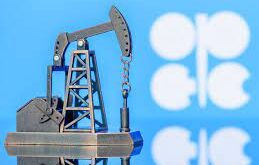The amount of remaining recoverable oil resources in the world is 9% lower than last year, according to a new Rystad Energy assessment, which also showed that oil production and consumption can align with future climate goals.
The assessment illustrated each country’s remaining recoverable resource standing as of the beginning of 2021.
Rystad Energy estimates total recoverable oil resources of 1,725 billion bbl, a significant reduction from last year’s estimate of 1,903 billion bbl. Of this total—an estimate of how much oil is technically recoverable in the future—about 1,300 billion bbl are sufficiently profitable produced before 2100 at a Brent real oil price of $50/bbl.
“In this scenario, global production of oil and natural gas liquids will fall below 50 million b/d by 2050. Exploring, developing, processing, and consuming this amount of commercially extractable oil will lead to gross greenhouse gas emissions of less than 450 gigatonnes of CO2 from now until 2100. This is compliant with IPCC’s carbon budget for global warming limited to 1.8˚C by 2100,” said Per Magnus Nysveen, head of analysis, Rystad Energy.
This year’s review of global recoverable oil resources is based on resources modelled at the well level rather than the field level. This more detailed approach has removed 178 billion bbl from the expected accounts as the confidence level for decline rates has increased with the amount of new information gathered.
Rystad Energy’s updated report also includes revisions for proved reserves. According to Rystad, the assessment applies a consistent set of conservative probabilities, as opposed to official reporting by authorities, which is deemed less consistent. Among other findings, Rystad sees significant differences among OPEC members on the longevity of proved reserves, ranging from well below 10 years for some members to almost 20 years for Saudi Arabia and the UAE.
In terms of absolute volumes removed from non-OPEC producers, remaining recoverable resources in the US are now reduced to 214 billion bbl, losing 30 billion bbl from last year’s estimate. China suffers the second-largest loss with its remaining recoverable resources now limited to 50 billion bbl, a downwards revision of 26 billion bbl. Mexico’s recoverable resources are downgraded by 12 billion bbl to 26 billion bbl. Most of this year’s revisions are driven by lower upside potential from shale oil drilling due to complex geology and the need for extensive exploration campaigns and improved fracturing technologies.
The remaining recoverable resources of OPEC countries are reduced by 53 billion bbl to 741 billion bbl. Iran and Saudi Arabia have the largest revisions, losing 11 billion bbl each, with Saudi recoverable oil volumes now calculated at 288 billion bbl and Iranian volumes at 101 billion bbl. Iraq follows with a loss of 8 billion bbl to 110 billion bbl.
In this revision, Saudi Arabia remains as the producer with the largest volumes of recoverable oil resources (288 billion bbl). The US follows with 214 billion bbl. Russia comes in third with 149 billion bbl, and Canada is fourth with 138 billion bbl.
In Central and South America, Brazil remains first in recoverable resources, sitting on 83 billion bbl (down 2 billion bbl from last year’s update). In Europe, with 19 billion bbl (down 1 billion bbl in this update), Norway remains ahead of the UK, whose volumes have shrunk by 2 billion bbl to 10 billion. In Africa, resource leader Nigeria lost 6 billion bbl and its recoverable resources are now estimated at 20 billion bbl.
Unlike most countries in the analysis, Australia’s estimated recoverable oil resources increased by 2 billion bbl to 23 billion bbl.

Drilling rig in oil field for drilled into subsurface in order to produced crude, inside view. Petroleum Industry
 Iran Energy News Oil, Gas, Petrochemical and Energy Field Specialized Channel
Iran Energy News Oil, Gas, Petrochemical and Energy Field Specialized Channel



